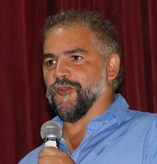(INFIQC-UNC-CONICET) marcelo.mariscal@unc.edu.ar

Topic: Two-dimensional materials, behind Feynman’s dream
For a long time, crystalline structure materials composed of multilayers have been widely used in a wide variety of technological applications. For instance, for a long time, graphite and molybdenum sulfide (MoS2) were used as dry lubricants due to their layered nature. In these materials, the atoms are tightly bound within the same plane but are weakly joined by van der Waals forces between layers. This weak interaction between layers allows us to separate them with relative ease to the limit of obtaining a single sheet or “monolayer” of these materials. The isolation of a single graphite monolayer, known as “graphene”; or MoS2 has opened in the last 10 years a very new and vertiginous research field due to the great variety of properties of these new materials “two-dimensional materials (2D)”. It has been found that the electronic and optical properties are very different from those of their three-dimensional counterparts. Many studies are performed through a synergy between computer simulations and high precision experiments since one of the most important challenges in the development and consolidation of technologies using these 2D materials, is to produce them with very high quality.
In this presentation we will take two 2D materials as an example, in which we will show how to use the theoretical-experimental synergy were used, in a first case, to discover a mechanism to produce high quality graphene. In particular, we have discovered the role of free adatoms in the catalytic process of graphene growth over nickel [1]. In a second example, we will analyze MoS 2 , one of the most important catalysts for the oil industry, which is used to remove sulfur from the fuel (hydrodesulfurization). In particular, we will see the effects produced by structural and geometric modifications in the electronic structure of the 2D material [2].
[1] Real-time imaging of adatom-promoted graphene growth on nickel, L.L.Patera, F. Bianchini, C.Africh, C.Dri, G.Soldano, M.M.Mariscal, M.Peressi, G.Comelli, Science (2018). 359, 1243-1246
[2] The unexpected effect of vacancies and wrinkling on the electronic properties of MoS2 layers, FR Negreiros, GJ Soldano, S Fuentes, T Zepeda, M José-Yacamán, M. M. Mariscal, Phys. Chem. Chem. Phys. (2019) 21 (44), 24731-24739
Summary Background
Dr. Mariscal graduated with a degree in Chemistry from the National University of Córdoba. He completed a Doctorate in Natural Sciences (2004) at the Ulm University, Germany. Then he graduated as a Doctor of Chemical Sciences (2008) at the UNC. He is currently MAIN Researcher at CONICET and Adjunct Professor at UNC. He has formed a research group at INFIQC / UNC in the field of computational simulations of nanomaterials for the development of sustainable energies, of new materials for the metallurgical industry and catalysis. He has published more than 65 articles in high-impact international journals, 2 books and chapters, and has given guest lectures in several countries. He has directed 4 PhD thesis and 10 Degree. In 2010 he was a Visiting Professor at the University of Texas at San Antonio.
In 2014 he won the “The World Academy of Science TWAS-ROLAC Prizes for Young Scientists” award in the Chemical discipline. He is currently an Adjoint Member of the University of Texas at San Antonio and a PhD program in Science from the University of Talca, Chile.
